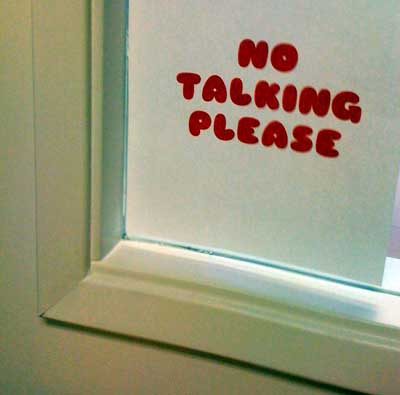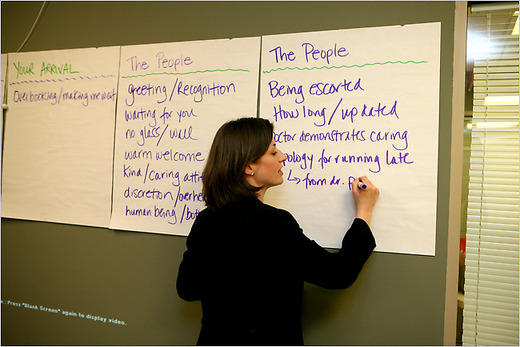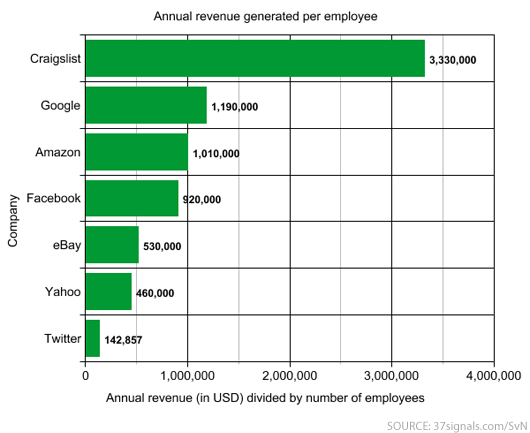Corey Waldin of Internet Simplicity, a Silicon Valley web dev firm, wrote in to tell us about the firm’s “no talking time.”
We have our own “no talking time” during the afternoon where every just designs, programs, works. No talking at all (unless there’s a client meeting). We even made a little sign that goes up during this time so when people come into the office they don’t forget.

But in his review of REWORK, software developer Henrik Paul worries about taking the idea that “interruption is the enemy of productivity” too far.
If you abolish all kinds of interruptions, you would effectively seal everyone to their own small little soundproof, locked-door cell, and nobody may talk to each other directly. The piece does mention that passive communication is ok (e.g. email), while active is not (talk, meetings, phone, IM.)
The key to a successful project, in my mind, is good communication. Communication should be open, and there shouldn’t be any protocol to do that. Once you put obstacles in front of communication within your project, people will slowly just stop asking about those little “meaningless” things. It turns out, those meaningless things are often not that meaningless after all, but those nuances that take your product from merely good to excellent.
Sure, nobody likes interruptions. But I like to communicate with my collagues. Consider a good compromise. My suggestion (as if I would have any weight) is to cut unnecessary interruptions. Allow people to opt-out from interruptions, don’t interrupt people with out-of-topic things. But don’t discourage communication. That’s not a workplace I want to work at.
It’s all about striking the right balance. You don’t want to discourage necessary communication – do that and you’ve thrown out the baby with the bathwater. But you do want to move away from a de facto “tap on the shoulder” environment that constantly breaks up the workday.
Every interruption comes with a tax. There’s a slight price you’re paying. And that adds up.
Make sure what you want to discuss is worth that cost. Whatever you’re about to tell a colleague needs to be worth taking them away from what they’re doing. If it’s not, take it to an email or some other way that won’t take that person out of the zone.



